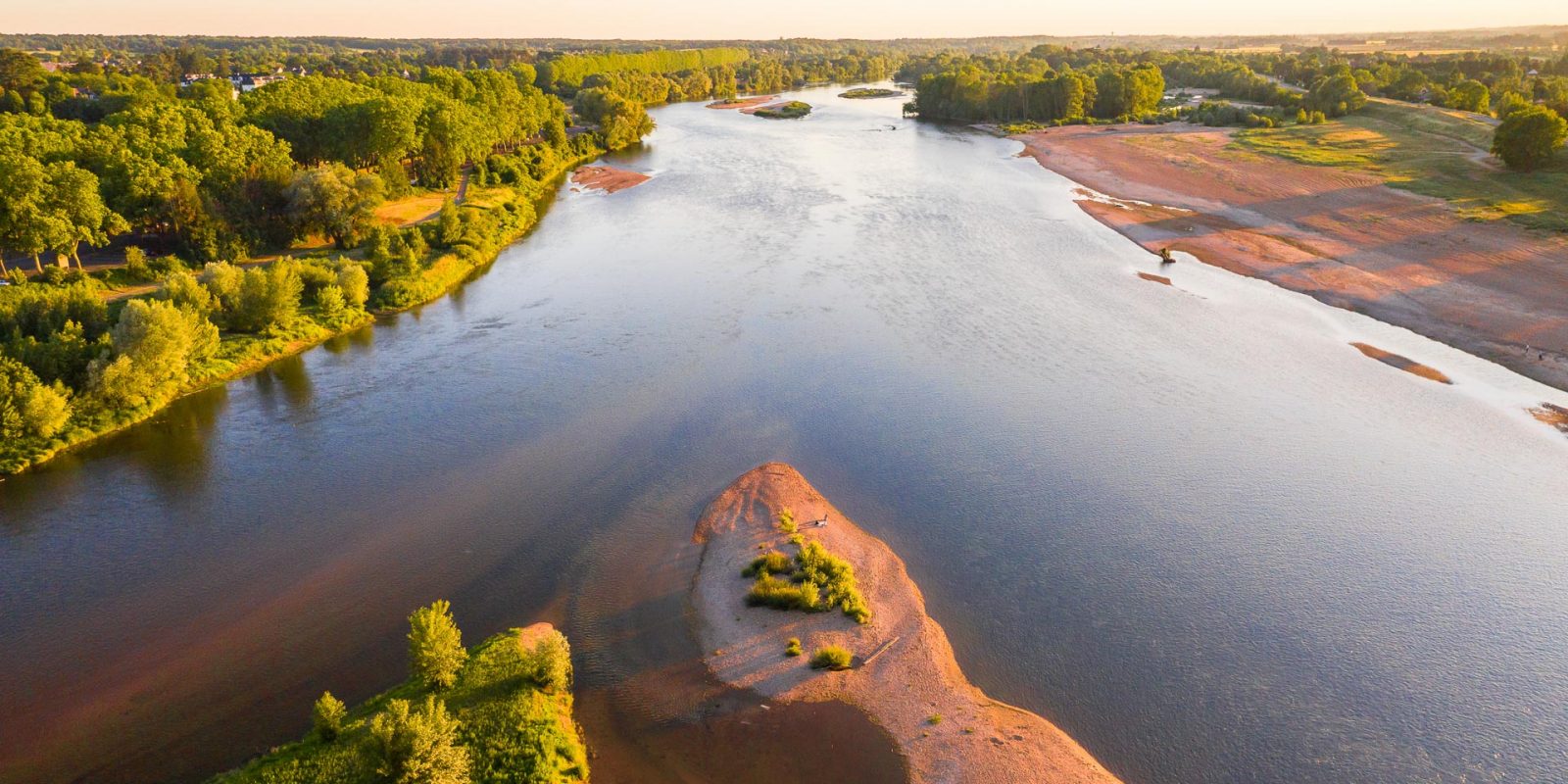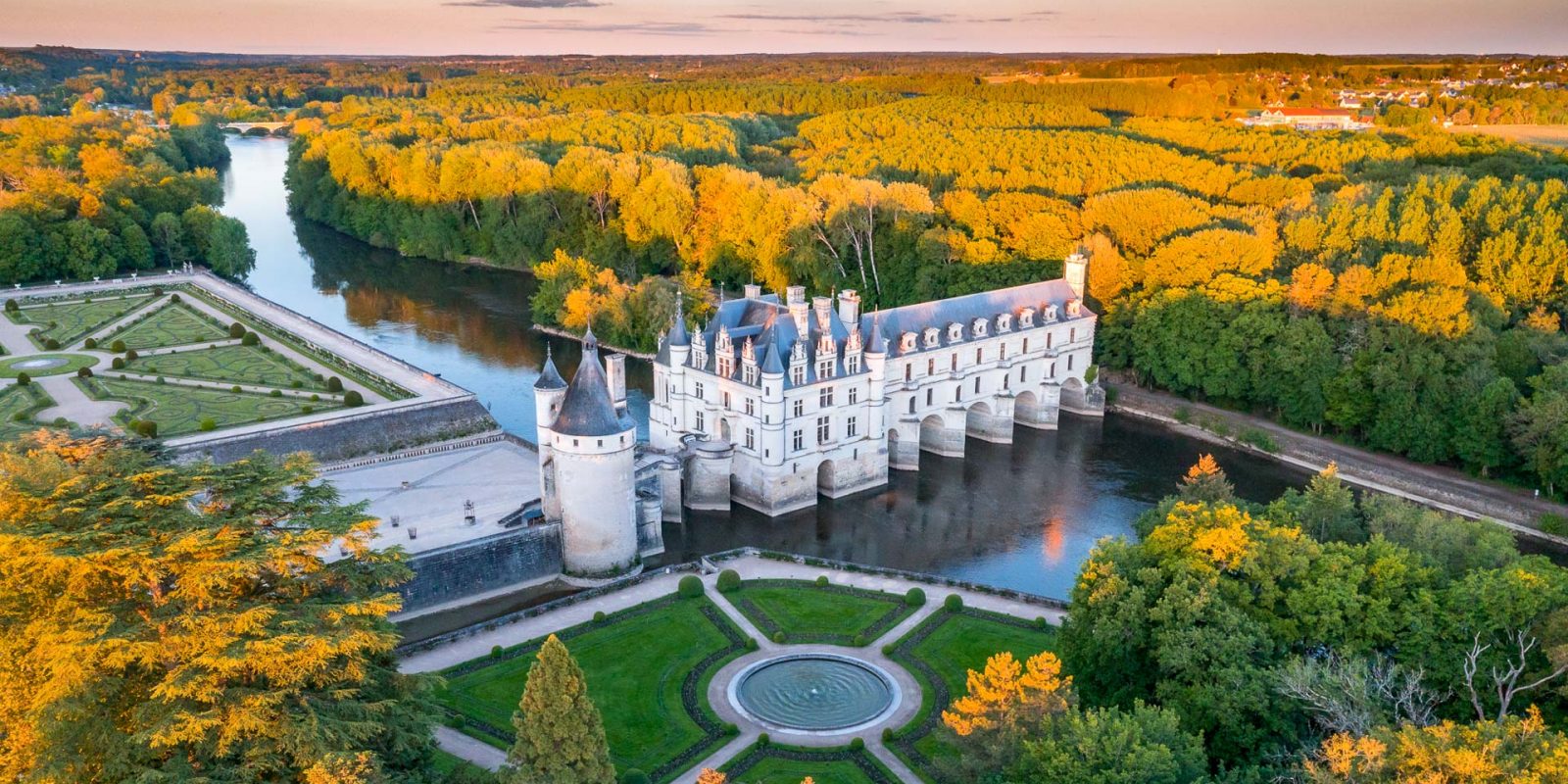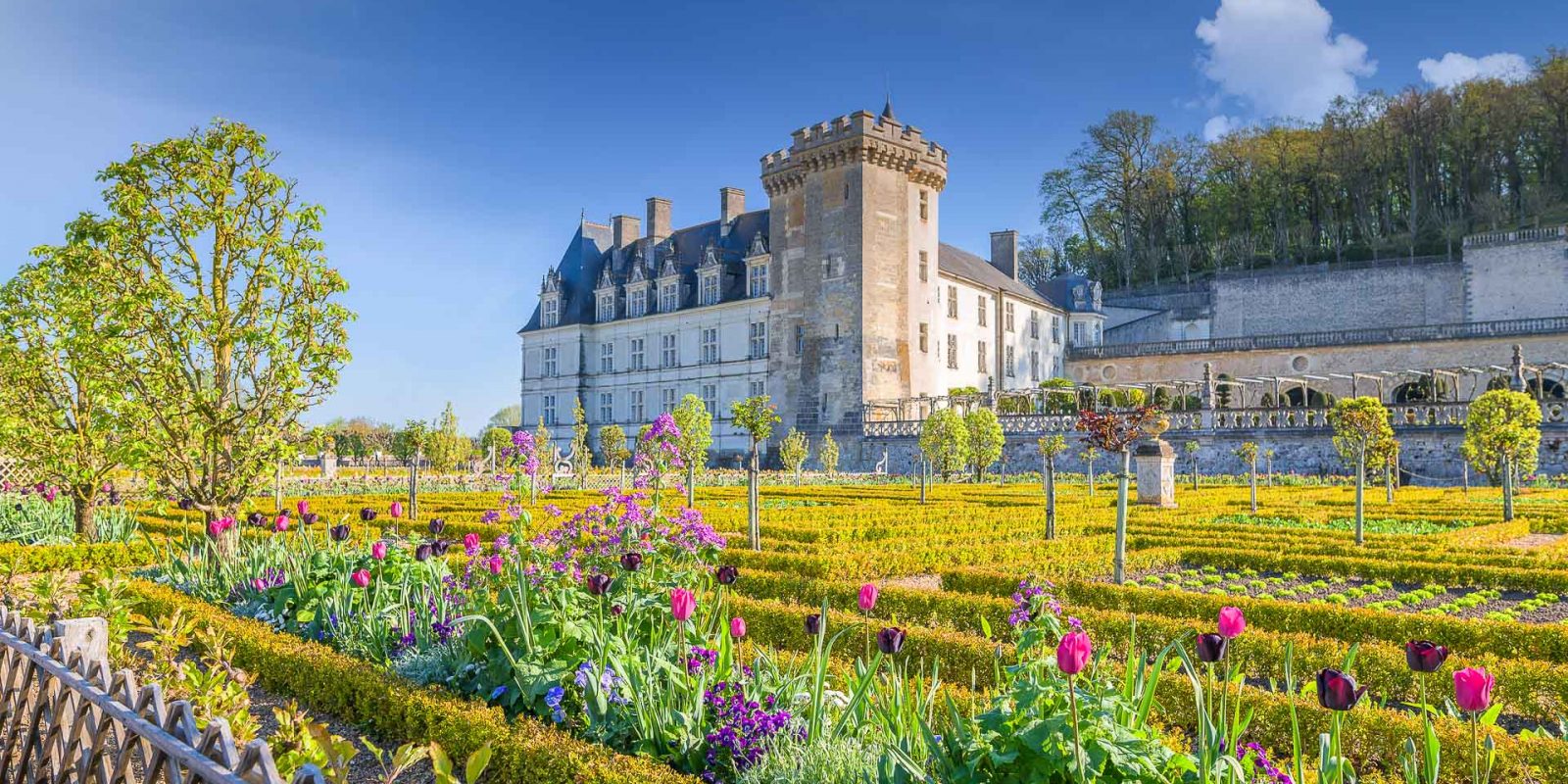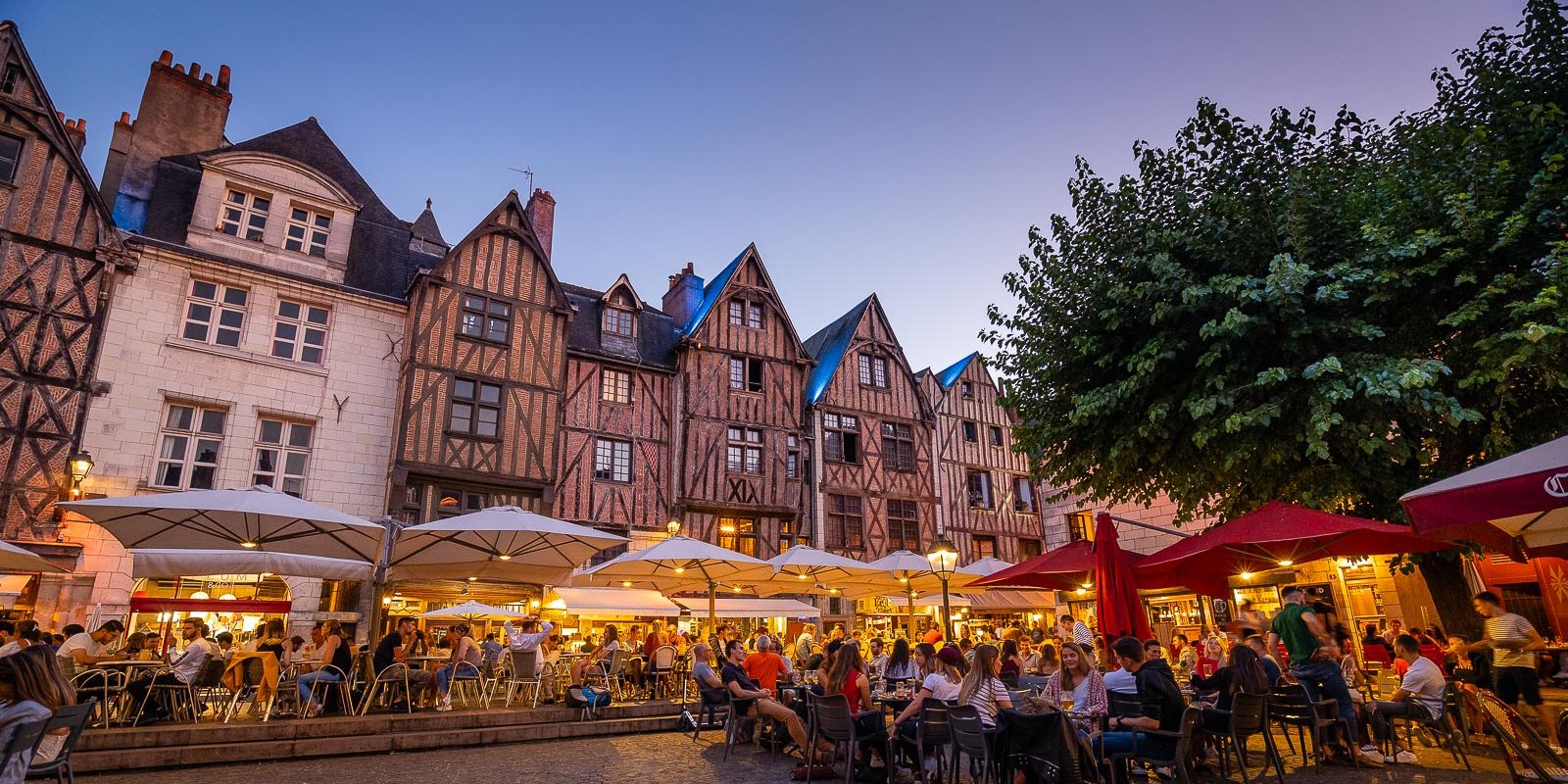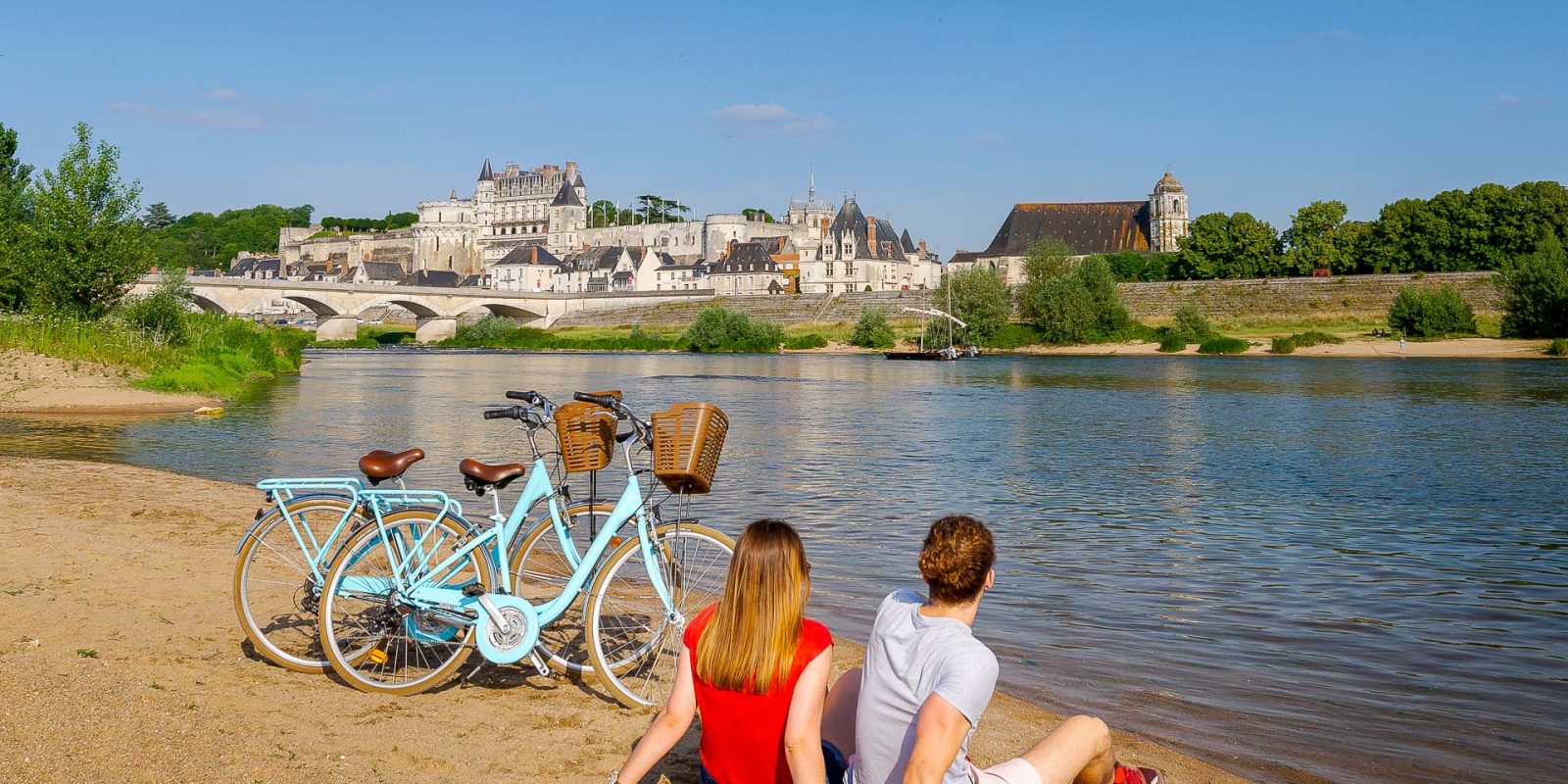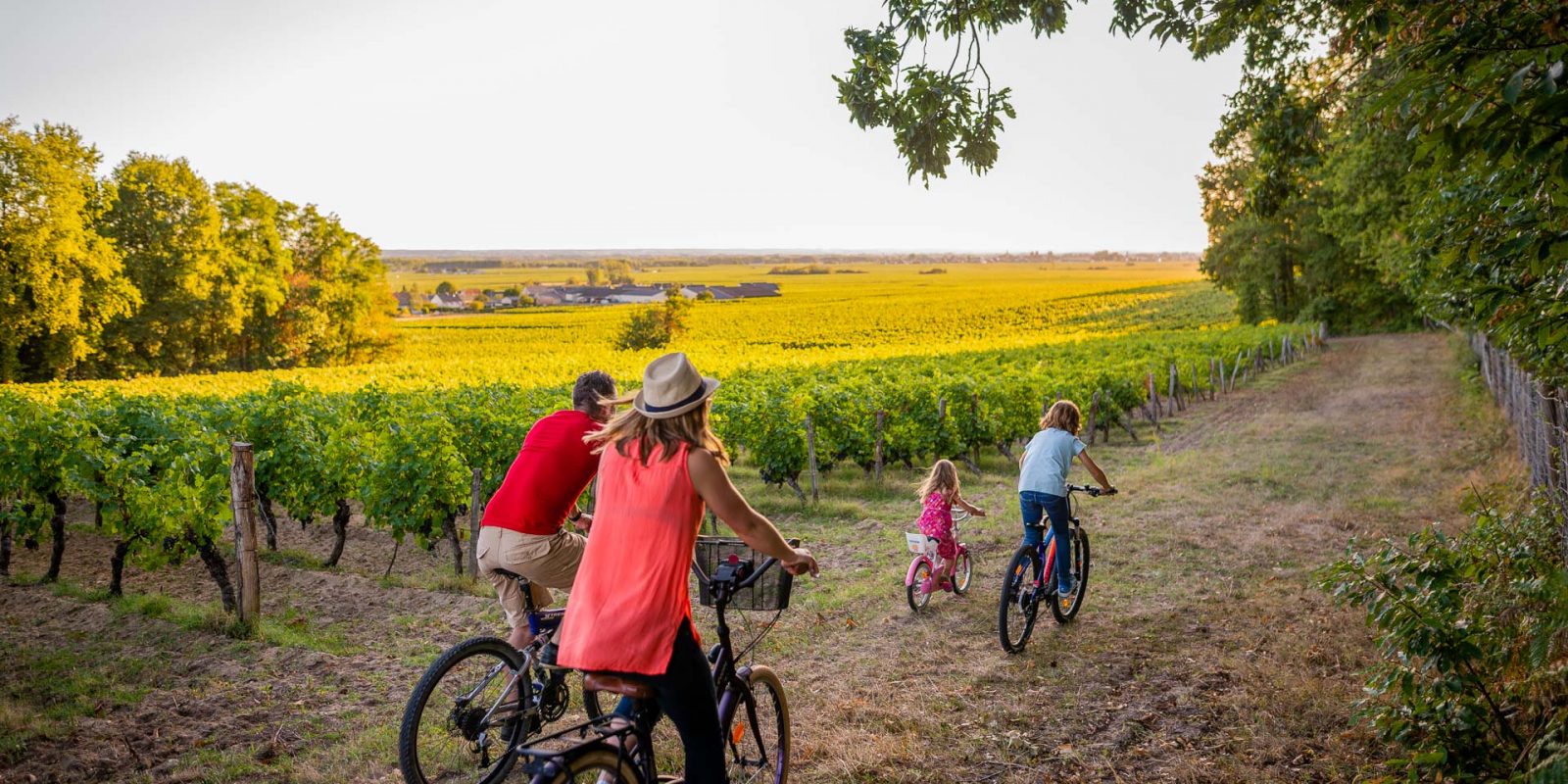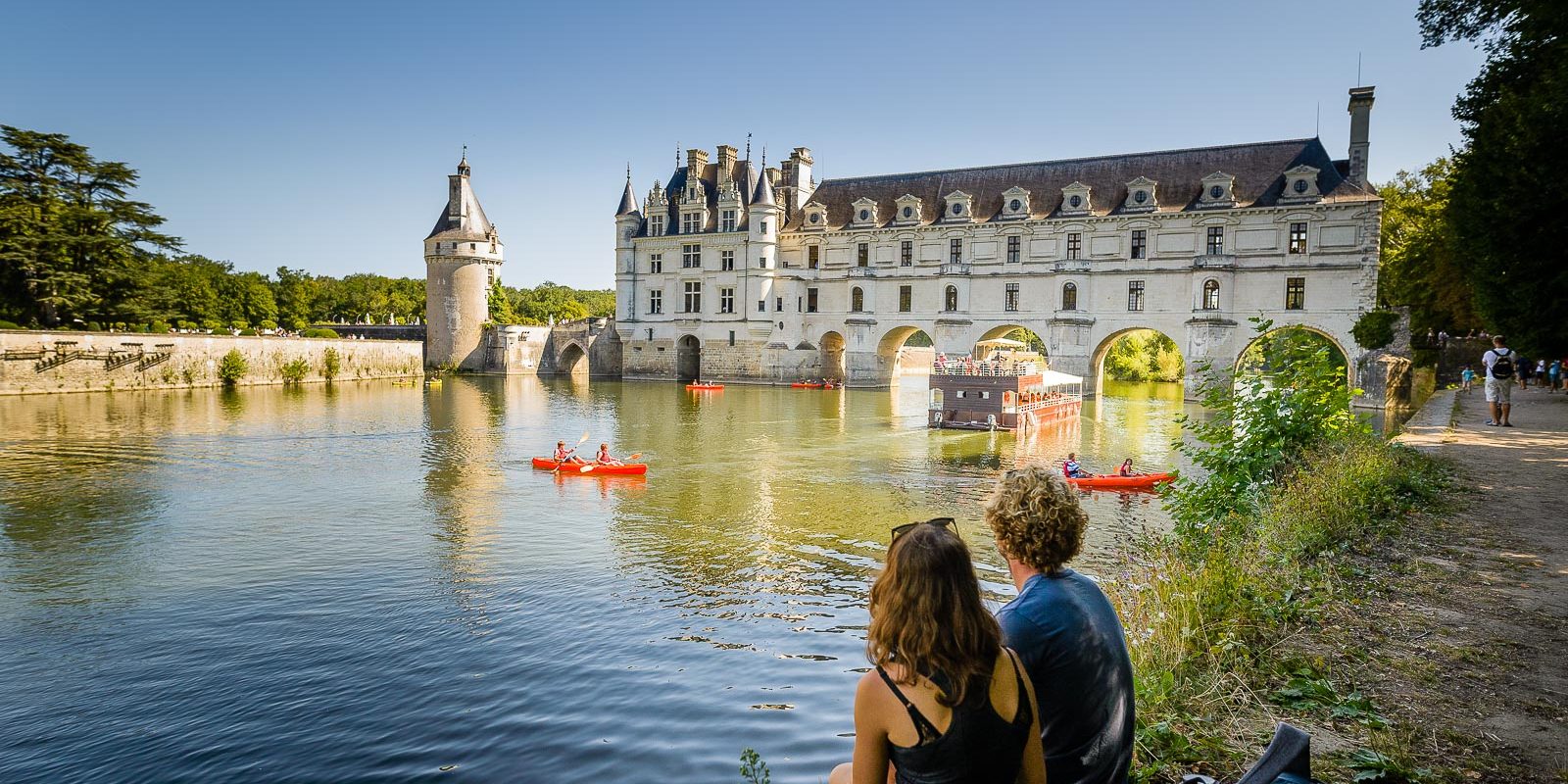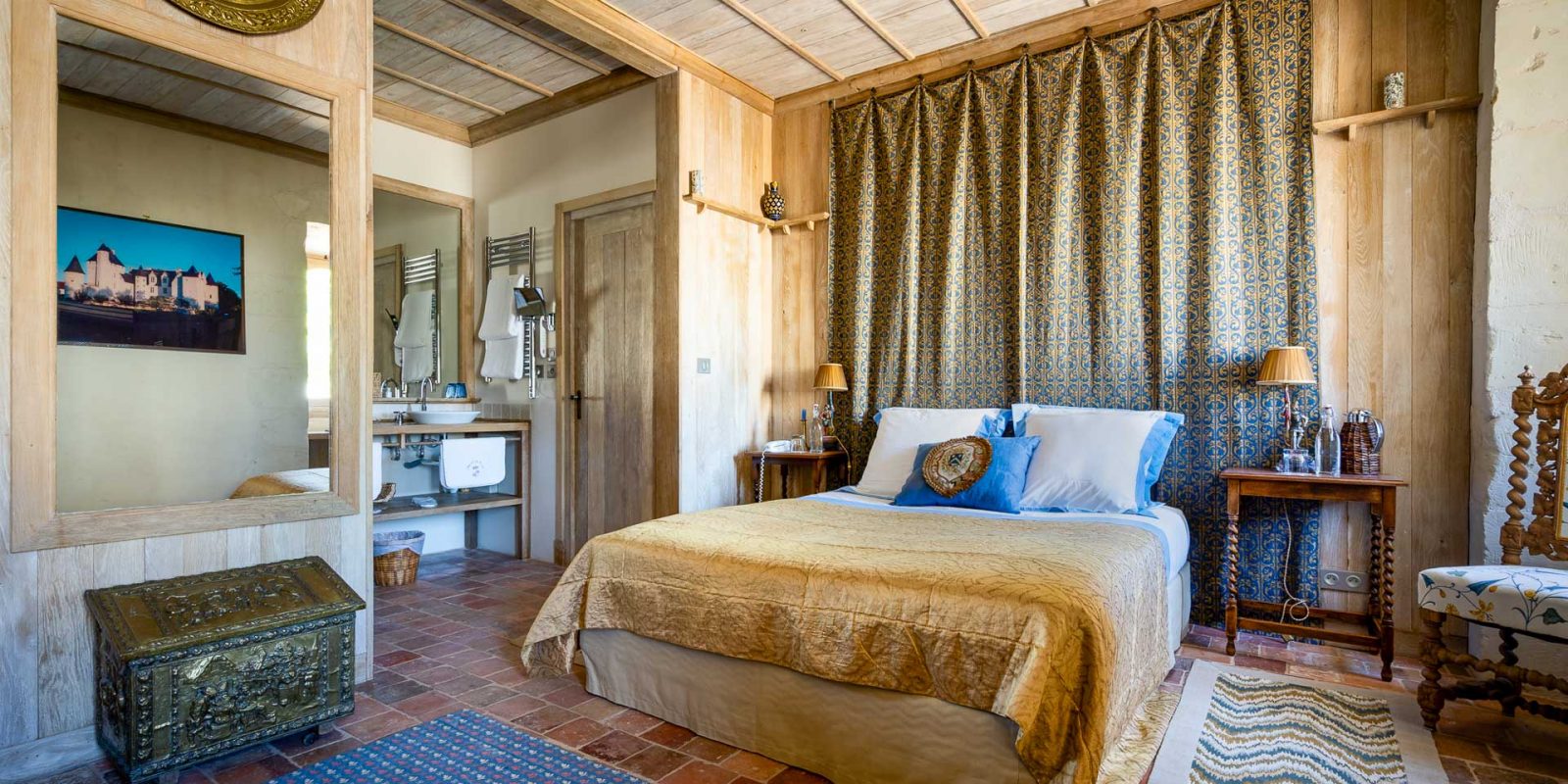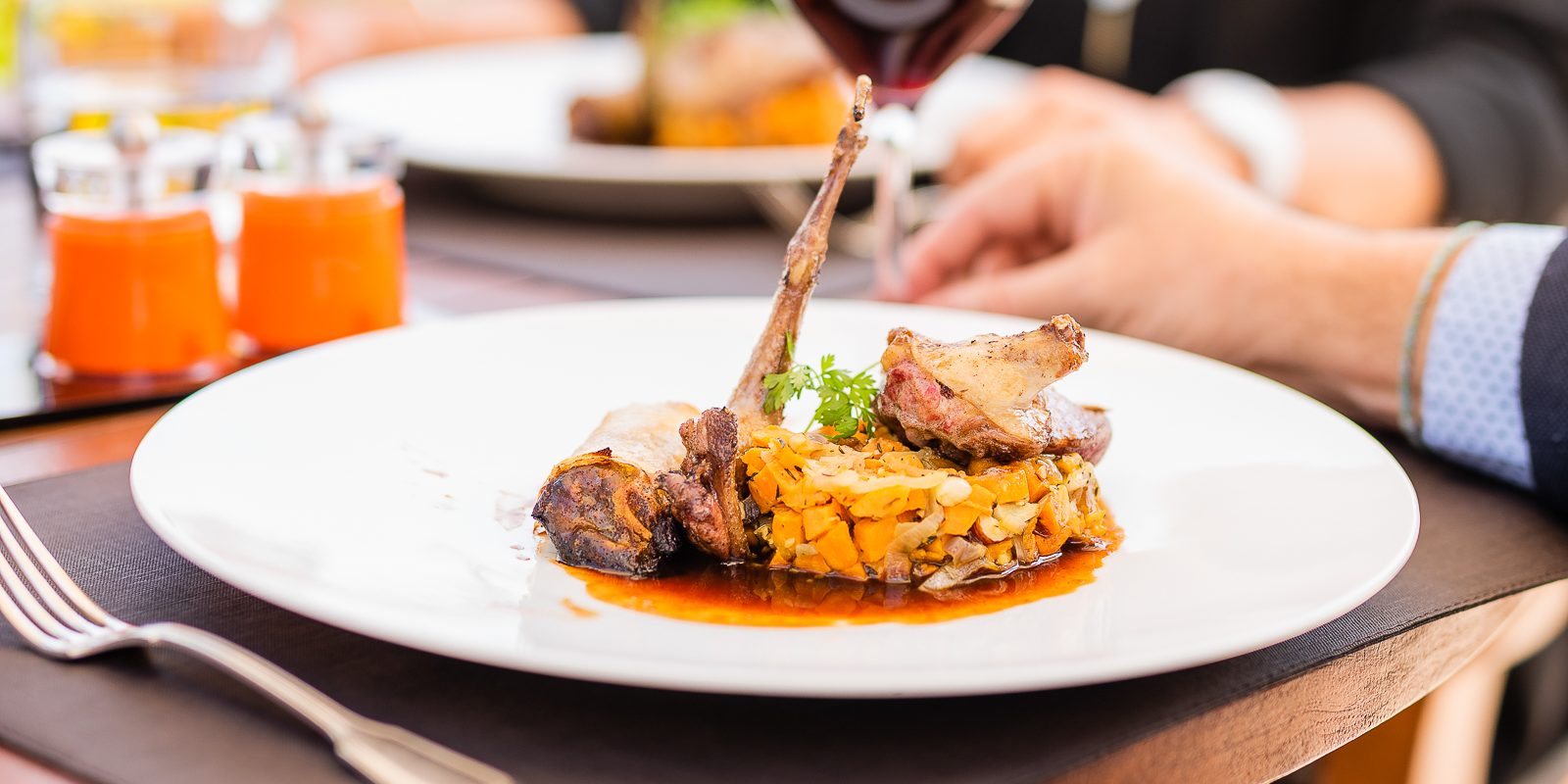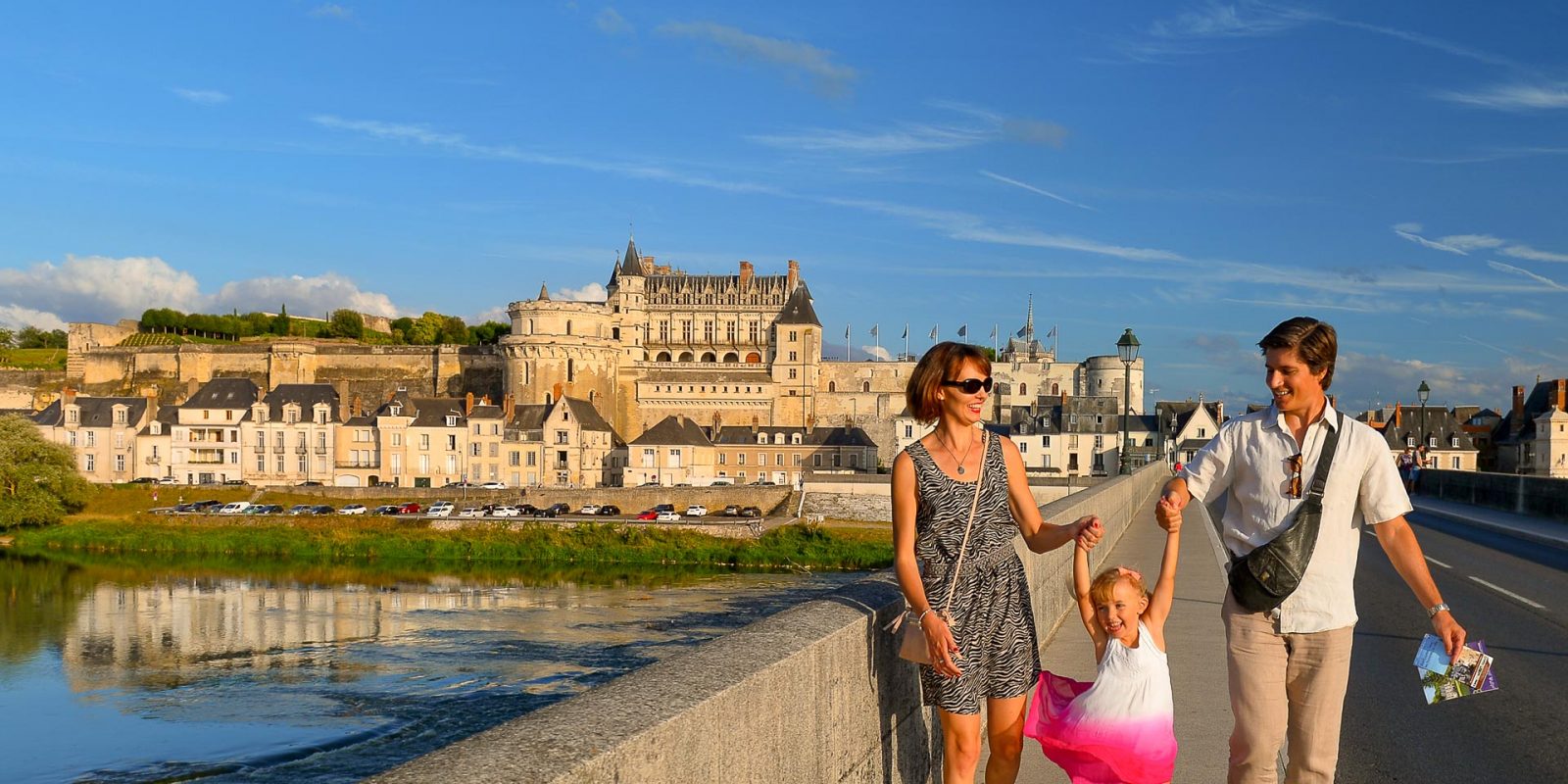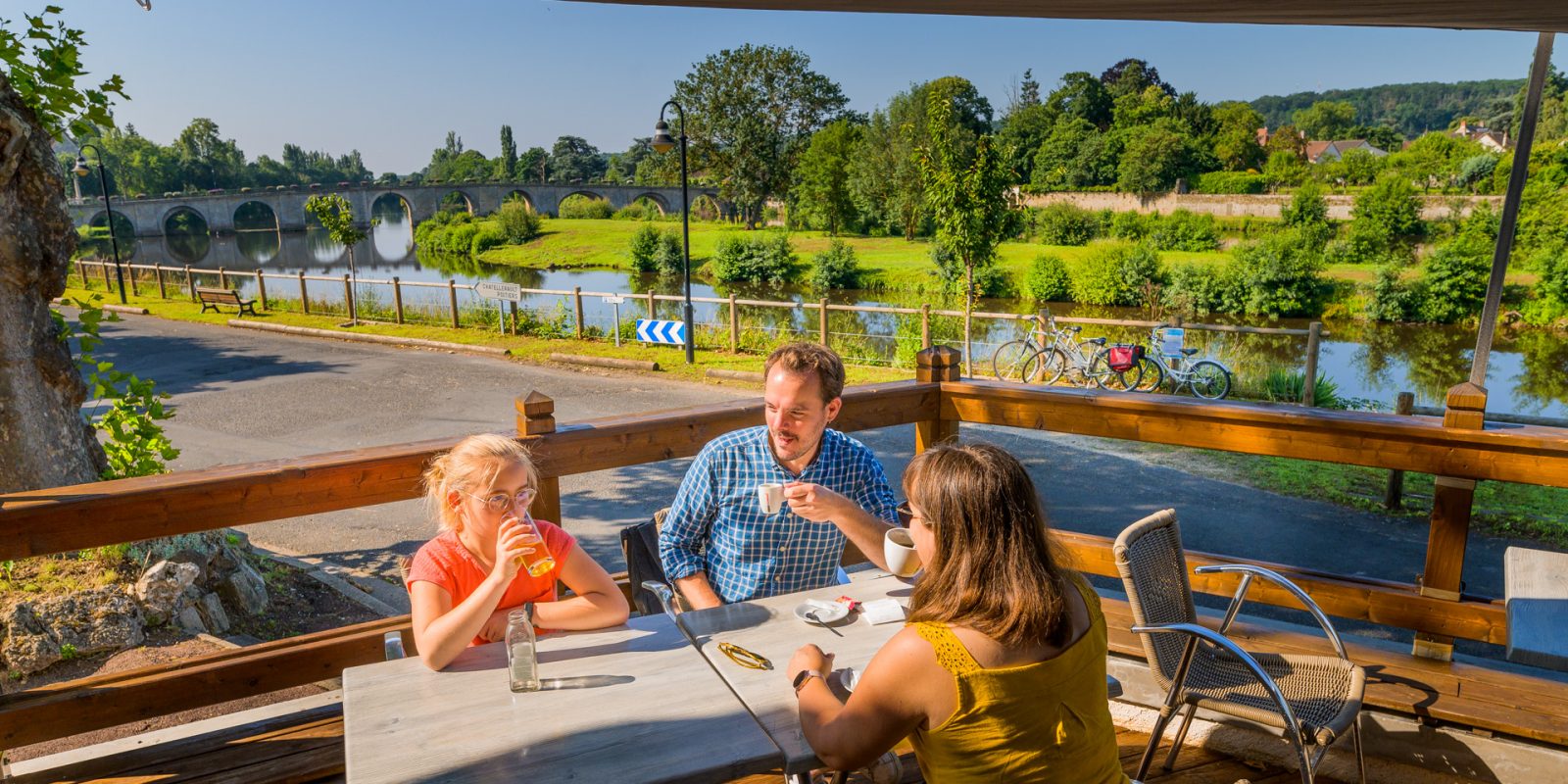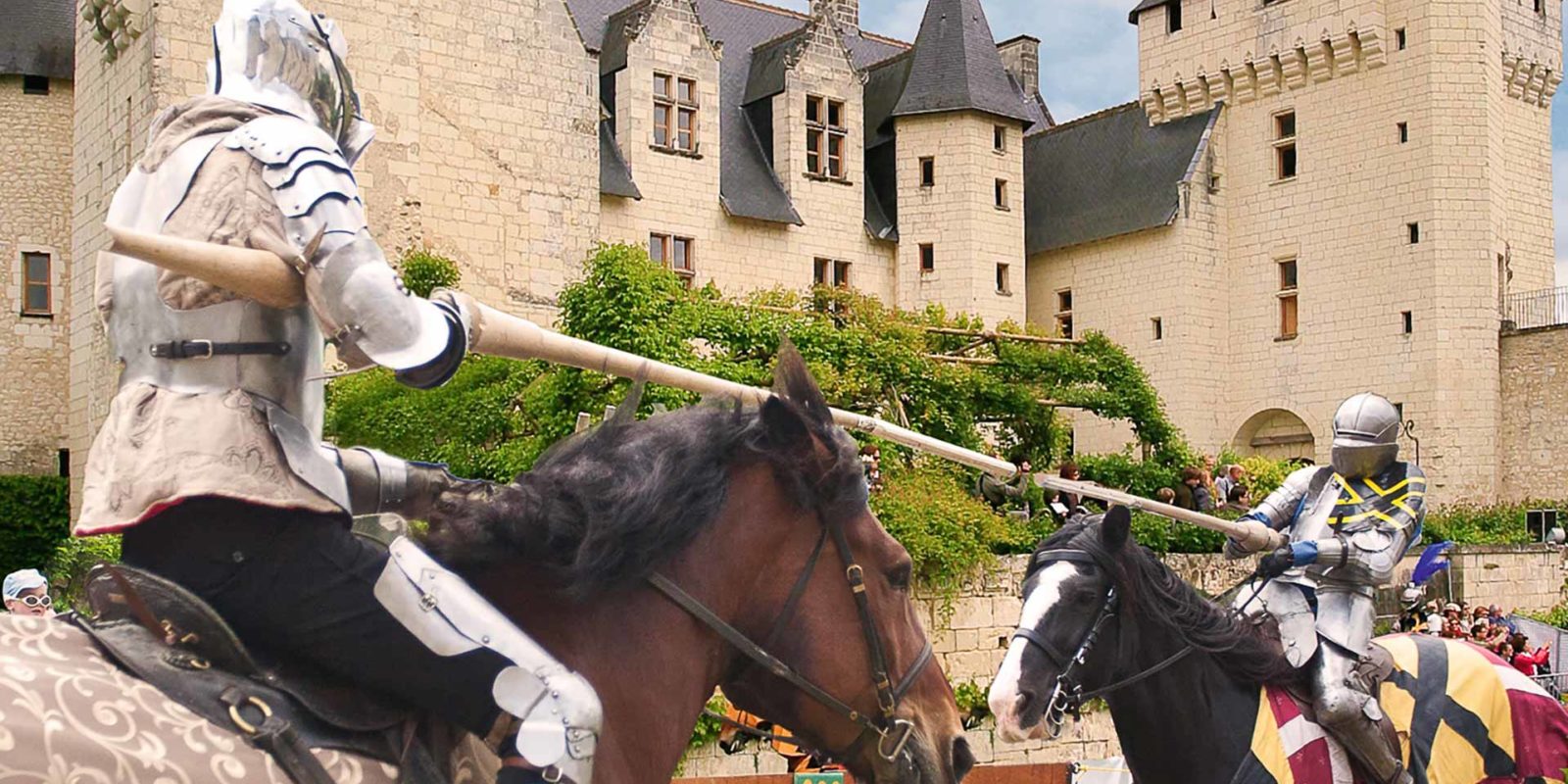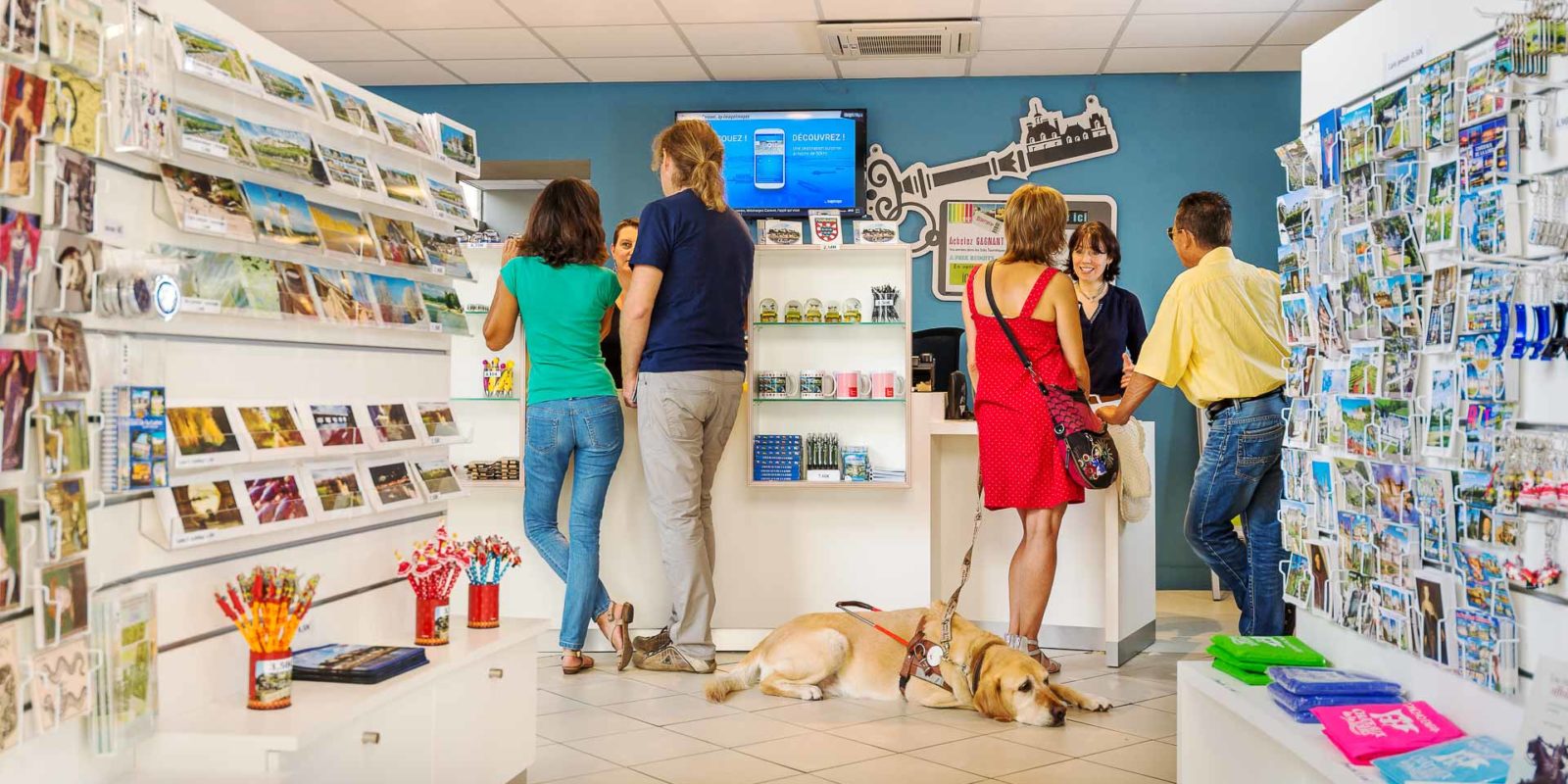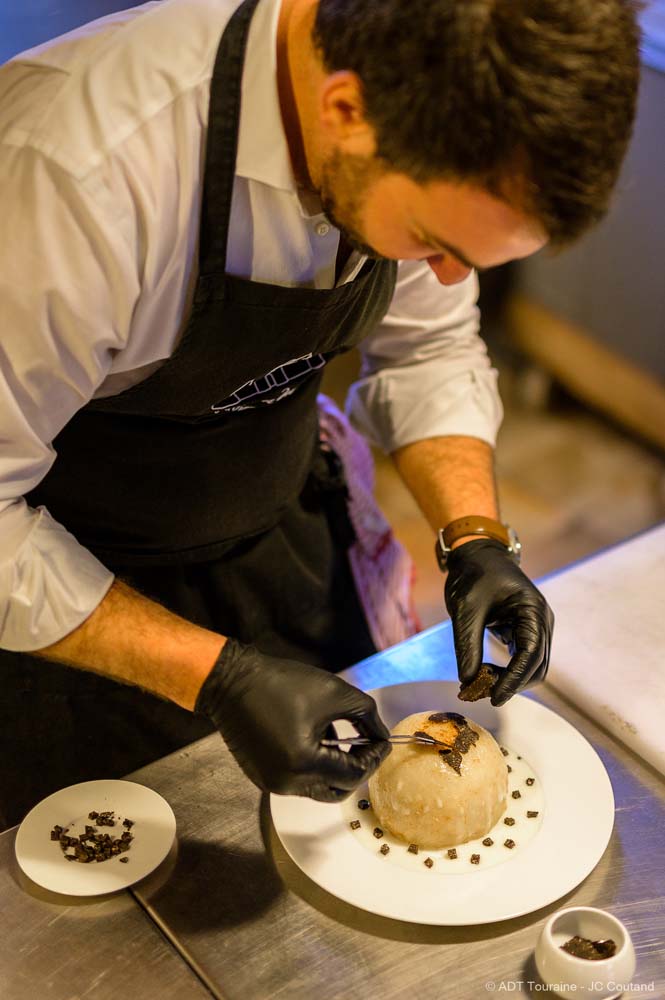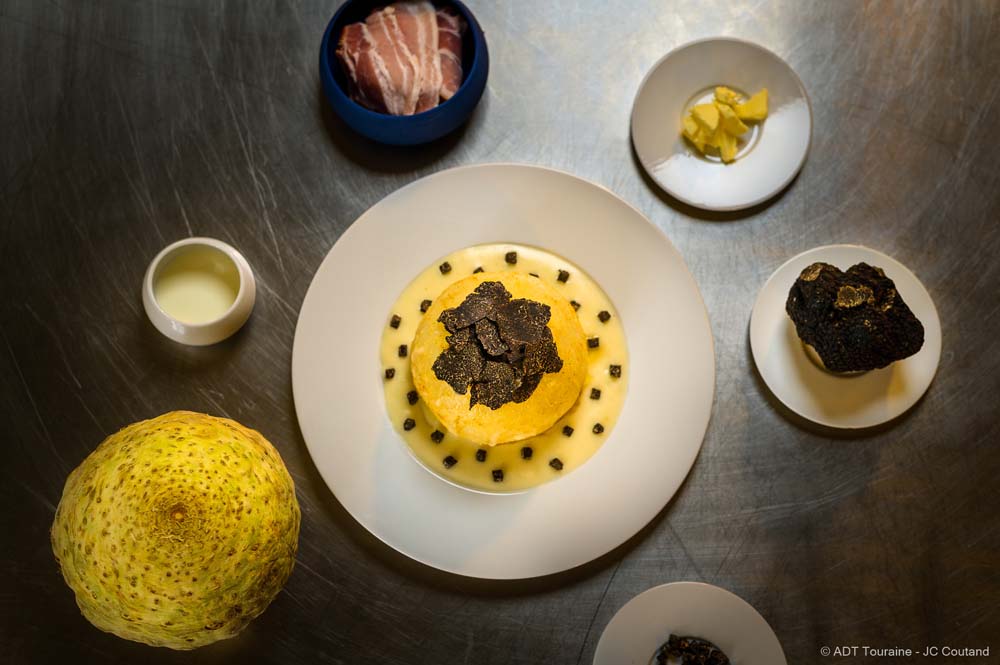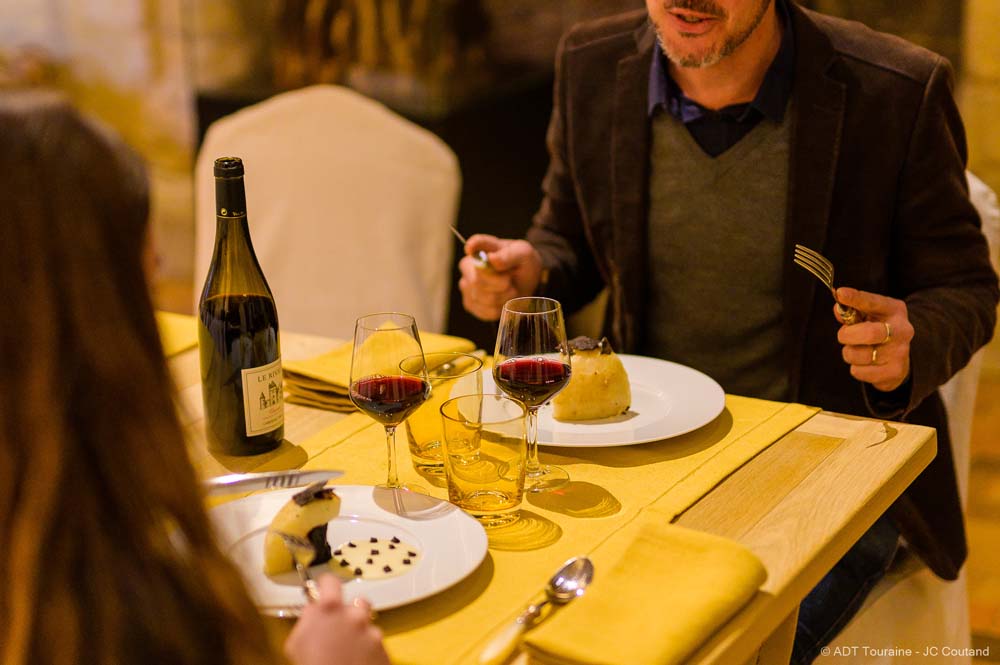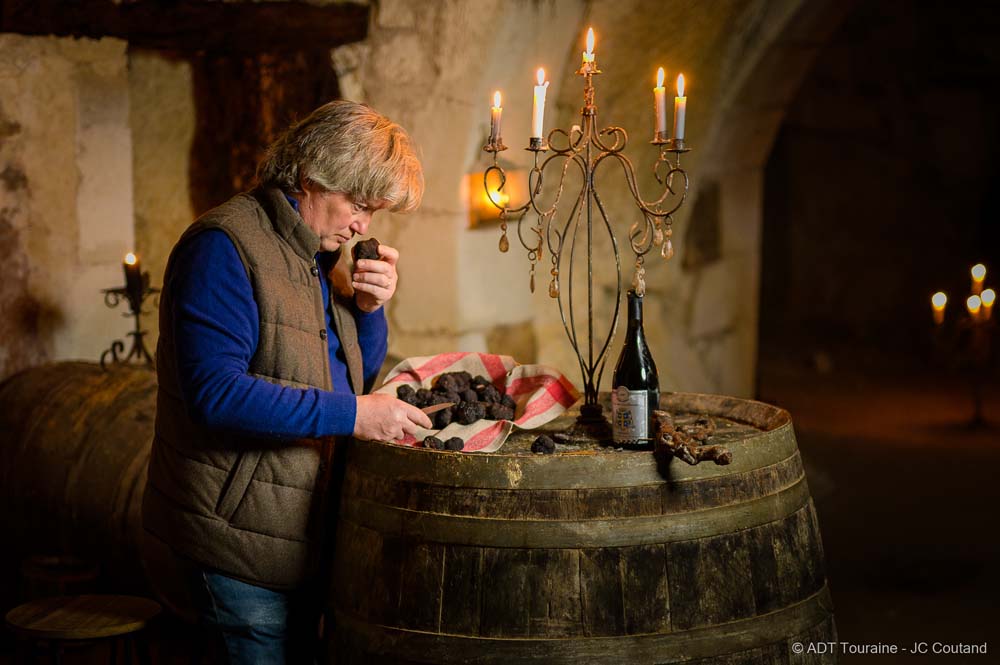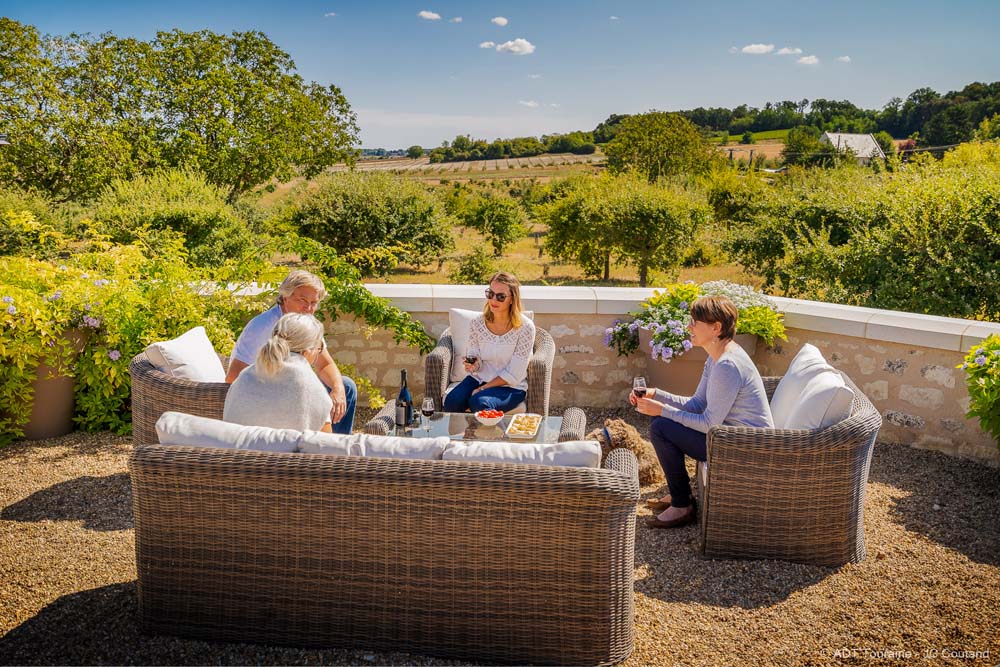The Touraine truffle: history, farming, recipes…
The end of autumn and the first cold days of winter are eagerly awaited as the preparations begin for family get-togethers during the festive season. There are the Christmas markets and even, in Touraine, Christmas in the land of the châteaux. But for food lovers, like our local chefs, another idea comes to mind: the truffle season has arrived, and especially the famous black “Périgord” truffle or tuber melanosporum.
The truffle season
This variety* is the king of the fungi and can be found between November and February. Like fruit, a truffle needs time to mature to perfection, so that the outside is nice and black with white veins (the truffle farmer checks for maturity by brushing the truffle, but above all by “canifage”, which involves removing a fragment of the peridium with a knife to see the colour of the flesh). The truffle is then at the peak of its organoleptic qualities.
Once the truffles have been located in the truffle patch with the help of a dog or a pig, they should ideally be eaten within 10 days, since fresh truffles have the best taste. So winter is the ideal season to book a table in a restaurant serving tasty recipes giving pride of place to the tuber melanosporum. La Cave restaurant in Montlouis-sur-Loire is a partner of the Clay truffle farm. Each year new dishes feature on the menu. At the Château du Rivau, the chef (Nicolas Gaulandeau) at the new gastronomic restaurant is unmatched when it comes to enhancing a humble celeriac with a few grams of truffle and, most of all, remarkable skill:
Another reference in the sector is Maximilien Bridier, the chef at the La Roche le Roy restaurant (Tours). He clearly loved sharing a few recipes with us to make up a truffle-filled menu in good company:
The truffle, a fungus named desire
France, Italy and Spain are the main suppliers on the world market. Demand is much higher than supply, which is explains the relatively high prices. You can expect to pay around €1,000 per kilo, but with wide variations depending on the quality, shown in 3 different categories: Extra, category 1 and category 2. Périgord and the Apt valley are the regions producing the most truffles, but Touraine is begining to enjoy an important place in the French market, with over 400 hectares of truffle farms and 170 truffle farmers.
Serge Désazars in Montgaillard symbolises the French revival. He has planted 18,000 oak trees, carefully lined up on 70 hectares of clay-limestone soil in the Richelais region. Le Baron de la Truffe is now France’s biggest organic truffle farm. The farm is open for visits, and at the Gîte des Truffières you can enjoy a 100% truffle stay!
Guided visits are also on offer at Le Logis de la Pataudière (which also has a gîte and bed & breakfast accommodation), and the fine setting of the Rabelais Museum has recently been enhanced by a truffle patch.
A few dates for your diary, if you want to try a few recipes, such as scrambled eggs with truffles, raviolis with truffles or stir-fry scallops served with slivers of the black diamond:
- Truffle Saturdays at the Domaine de Cray and at the restaurant La Cave (demonstration of truffle-hunting in an educational truffle patch, then lunch featuring truffles from the starter to the dessert), from November to January.
- The two truffle markets in Marigny-Marmande, usually just before the Christmas period.
- The truffle and saffron market at Tours Town Hall (between Christmas and New Year’s Day).
- The Truffle Festival in Chinon, in early January.
In Sainte-Maure-de-Touraine, Touraine Truffes et Safran sells its own truffles and saffron. And if you want a ready-made product, the shop at the Vazereau farm has an unpasteurised Chinonais goat’s cheese with truffles. Bon appétit!
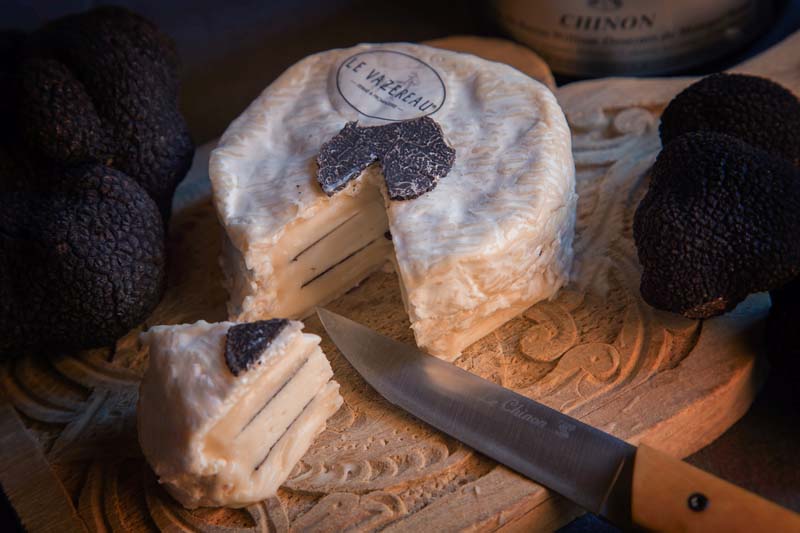
The Chinonais – a speciality with truffles from the Vazereau farm.
Truffles in Touraine
Like elsewhere in France, polyculture was widespread in our countryside. So, near Chinon and Richelieu, it was not unusual for farmers to have a truffle patch to round off their income, as well as growing saffron. Truffle farming flourished especially in the late 19th century. But with the rise of mechanical farming and specialisation, truffle farming declined. And it was only in the 1970s that truffles resurfaced in Touraine’s agricultural landscape, when mycorrhizal trees were planted. For the tuber melanosporum, pubescent oaks and evergreen oaks are mainly used, since truffles develop in a symbiotic relationship with the trees’ root network (they take sugars from trees and provide mineral salts). For other varieties of truffle, wholesale nurseries also provide truffle-friendly hazels, hornbeams, elm, cistus and black pine, among others.
We should point out in passing that it is not enough to wait for the trees to grow. You have to make sure they are properly watered, that the soil is laboured and of course that the host tree is well pruned. If the tree grows too quickly without pruning, it could reduce the spread of truffles. Near Chinon, François Houette has even used the famous Japanese pruning technique for bonsais, resulting in high-density truffle patches (2,000 young plants per hectare, compared with 300 generally).
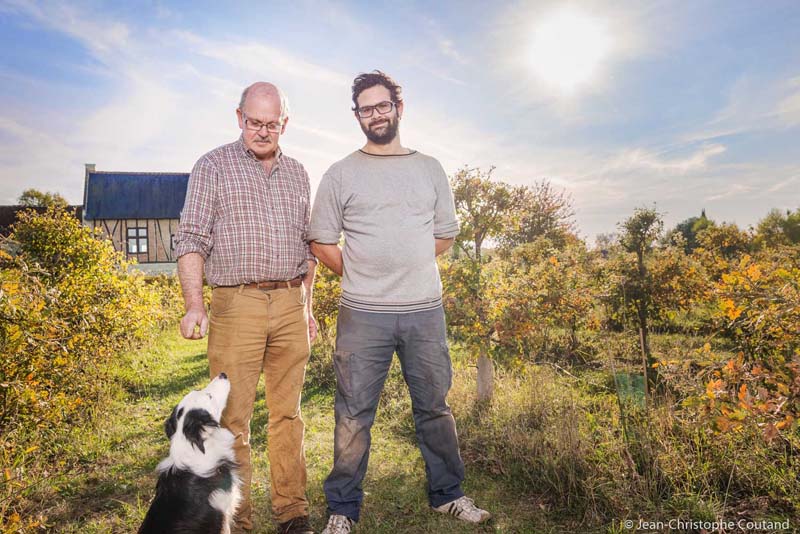
The Houette family truffle farm
*Besides the tuber melanosporum, there are other varieties, such as the Tuber Brumale. Other varieties mature later, such as the Burgundy truffle (Tuber Aestivum/Uncinatum), the Meuse/Lorraine truffle (Tuber Mesentericum) and the Alba white truffle (Tuber Magnatum Pico).
